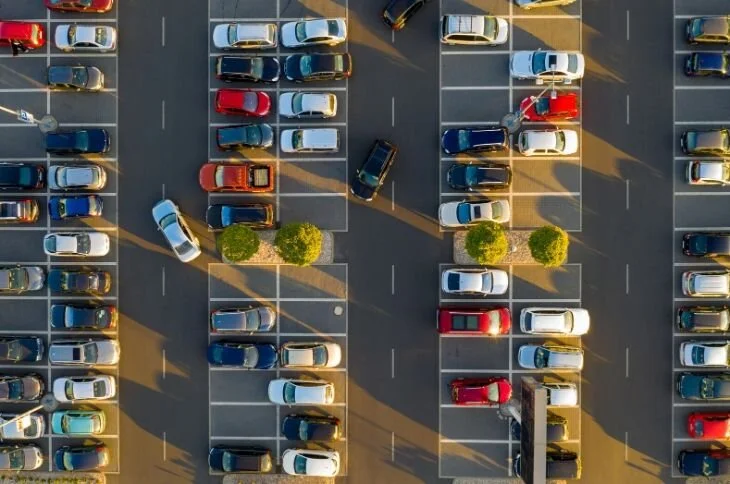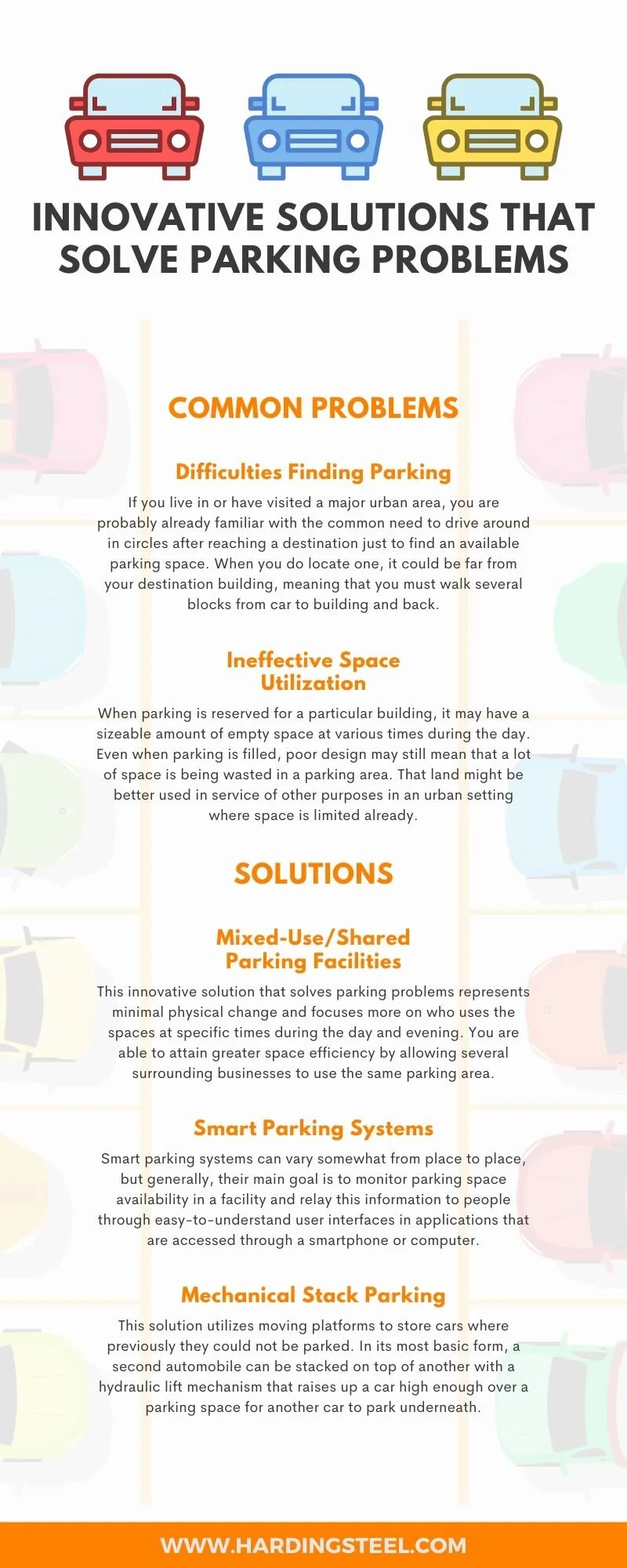Utilizing personal automobiles is the established standard of transportation for a great many people in the US. With the exception of some urban centers, public transportation remains non-expansive and less convenient than driving. At the same time, many people who work in cities still use cars over buses, trains, and alternatives such as biking and walking because they live outside the city in suburbs or value the control that driving brings. This all comes together to make a nationwide environment where owning one or more automobiles is the standard and where lack of parking in urban areas is becoming a larger complication. In this post, we’ll seek to understand the issues that many cities are facing and the innovative parking solutions and extra parking ideas that solve parking problems in one way or another when executed.
Common Problems
Difficulties Finding Parking
As touched upon, many cities have trouble with creating adequate parking and are seeking innovative parking solutions. If you live in or have visited a major urban area, you are probably already familiar with the common need to drive around in circles after reaching a destination just to find an available parking space. When you do locate one, it could be far from your destination building, meaning that you must walk several blocks from car to building and back. While many workplaces may have dedicated parking, not all do. Moreover, residents of certain areas may face difficulties getting back in their homes when the street parking spots they use fill up after a certain point in the afternoon.
Ineffective Space Utilization
Several cities put out laws requiring a minimum number of parking spots whenever a new structure is built to provide enough for people. Nonetheless, this was not as efficacious of a solution as they hoped. Despite the seeming parking shortage that citizens still run into in many places, parking can be excessive from a city’s perspective as a result of these laws.
This is because it costs a lot of money to develop and maintain parking lots and garages, raising the amount that needs to be spent when constructing and sustaining a building. Yet, when parking is reserved for a particular building, it may have a sizeable amount of empty space at various times during the day. Even when parking is filled, poor design may still mean that a lot of space is being wasted in a parking area. That land might be better used in service of other purposes in an urban setting where space is limited already.
Solutions
So how can these two sides of the problem be reconciled? People want more parking spots while city governments recognize that land is precious and would rather save it for better uses. Several solutions are available to choose from while looking for creative parking spot ideas.
Mixed-Use/Shared Parking Facilities
If one of the major concerns is that current parking areas squander land since they are often left empty, you can consider changing them into mixed-use or shared parking facilities. These innovative parking solutions that solve parking problems represent minimal physical change and focus more on who uses the spaces at specific times during the day and evening. You are able to attain greater space efficiency by allowing several surrounding businesses to use the same parking area.
Shared parking alleviates issues with overfilling by moderating who can use the parking at certain hours. For instance, an office might use up most of the space during the early morning and early afternoon, while a restaurant or theater has more patrons at night. You can set the hour ranges at which these different businesses use the parking area based on their peak hours. There may also be differences in weekday and weekend usage that are useful to take advantage of. Whichever way you allot the time, land that might once have been set aside for several separate parking areas can be developed into something else while the businesses share a central parking lot or garage.
Smart Parking Systems
This solution is a newer development that is yet to see widespread public application. However, it has been put into place effectively in the parking management of corporations so far and can certainly benefit public urban spaces in the future. Smart parking systems can vary somewhat from place to place, but generally, their main goal is to monitor parking space availability in a facility and relay this information to people through easy-to-understand user interfaces in applications that are accessed through a smartphone or computer.
Smart parking systems carry out this function with sensors that are installed in the physical parking spots, which can detect when a vehicle is parked there. These sensors may work based on a variety of detection methods including ultrasonic waves, electromagnetic fields, or infrared. The sensors transmit their data to a cloud network, which then communicates information in real-time to user devices through internet-connected applications.
When such a system is employed over a broad range of parking areas, it can be used to make finding a parking space easier, since the user has a clear picture of their destination before arriving. This in turn can reduce street traffic since fewer people are on the road searching aimlessly for parking. Smart parking systems can also prove useful in allowing for people to make parking reservations for certain places.
Mechanical Stack Parking
It is common practice today to spread parking lots laterally around a building or to erect a parking structure with multiple levels. Neither of these designs allocate space for efficient parking, however. A typical parking lot kills potential for vertical expansion, and a parking garage still contains a lot of unused space. Since vehicles and people must be able to traverse the garage, each level must possess empty space between and around parked vehicles.
Mechanical stack parking can considerably improve space efficiency to different degrees based on the constraints surrounding a parking renovation or construction project. This solution utilizes moving platforms to store cars where previously they could not be parked. In its most basic form, a second automobile can be stacked on top of another with a hydraulic lift mechanism that raises up a car high enough over a parking space for another car to park underneath. When many spaces need to be created in a city, though, there are even more effective types of mechanical stack parking to choose from.
Some systems, namely semiautomatic systems, are able to shuffle around multiple parking spots so that several additional spots can be created over the typical grounded ones in a single floor of an existing parking garage. This results in more spots without any expansion in land usage. Whenever a person needs to park, the platforms (represented by a tile) move so that an empty space is brought to the ground. Other cars that are currently not in use may be moved up to an elevated position in the meantime. When someone returns and their car is high up, they can interact with a nearby interface or with a phone application to move the spaces again and bring their car down.
If creating an entirely new parking area is an option, a design reminiscent of shelving can be created either above or below ground. This kind of system is designated as automatic, and users only see the entrance platform where they drop off their car. From there, the system moves the car on a platform internally to place it into an open shelf that can be many stories up or down. This system saves spaces because it does not need to account for pedestrians and vehicles driving within it. It can therefore pack vehicles much more compactly.
For information on mechanical stack parking, contact Harding Steel. We can help you successfully implement greater space usage with our variety of mechanical parking solutions that are suited to a wide array of specific needs.



